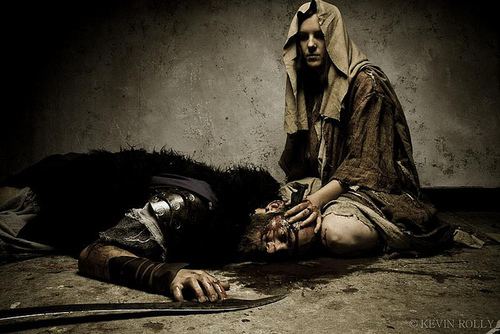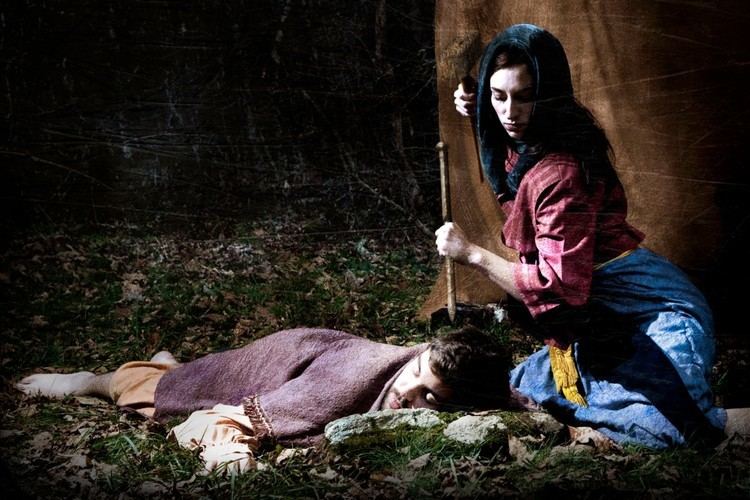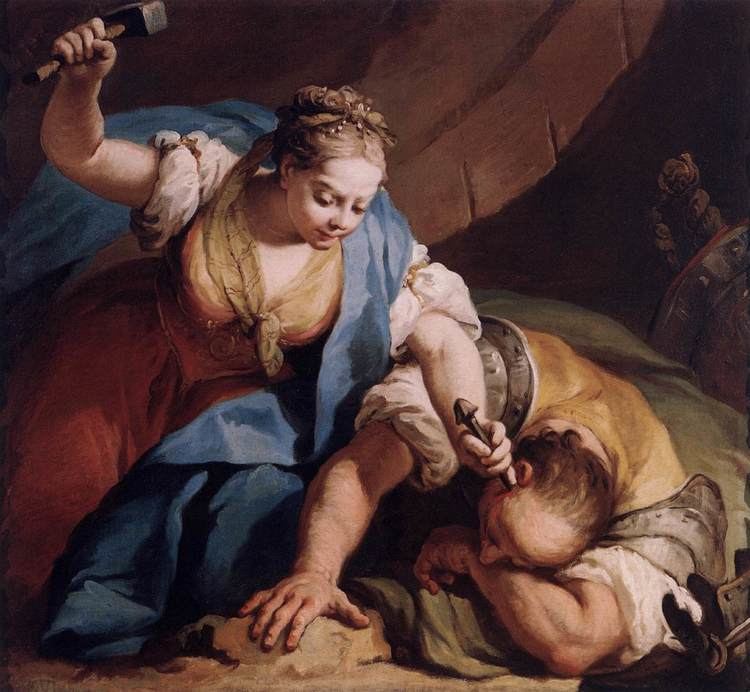Nationality Kenite Full name Yael Other name Ya'el | Other names Ya'el Spouse Heber the Kenite | |
 | ||
Similar | ||
Delerium ft jael after all official music video
Jael or Yael (Hebrew Ya'el, יָעֵל, meaning Ibex) is a woman mentioned in the Book of Judges in the Hebrew Bible, as the heroine who killed Sisera to deliver Israel from the troops of King Jabin.
Contents
- Delerium ft jael after all official music video
- Jael joinville 2016
- Family
- Jael in the Book of Judges
- Commentary
- Artistic depictions of Jael
- In popular culture
- As a name
- References

Jael joinville 2016
Family

Jael was the wife of Heber the Kenite. The Kenites were a nomadic tribe, some of whom lived in close proximity to the Israelites. The Bible records a number of cases of intermarriage; the father-in-law of Moses was apparently a Kenite, but it is not clear if this was Jethro. The Kenites may have been a part of the Midianite group.
Jael in the Book of Judges

Deborah, a prophetess and judge, advises Barak to mobilize the tribes of Naphtali and Zebulon on Mount Tabor to do battle against King Jabin of Canaan. Barak demurred, saying he would go, provided she would also. Deborah agreed but prophesied that the honour of defeating Jabin's army would then go to a woman. Jabin's army was led by Sisera (Judg. 4:2). The armies met on the plain of Esdraelon, where Sisera's iron-bound chariots became hampered by the mud caused by a downpour during the night that caused the Wadi Kishon to overflow its banks. The Canaanites were defeated and Sisera fled the scene.
Sisera arrived on foot at the tent of Heber the Kenite on the plain of Zaanaim. Heber's wife Jael (whose tent would have been separate from Heber's) welcomed Sisera into her tent and covered him with a blanket. As he was thirsty, she gave him a jug of milk. Exhausted, Sisera lay down and soon fell asleep. While he was sleeping, Jael took a mallet and drove a tent peg into his temple, killing him instantly. The "Song of Deborah" (Judg. 5:24-26) recounts:
Scholars have long recognized that the Song of Deborah, on the basis of linguistic evidence (archaic biblical Hebrew), is one of the oldest parts of the Bible, dating back to the 12th century BC.
Commentary
Judges 4:17 states that there was peace between the Canaanites and Heber's clan. They were familiar to the Israelites through the connection of Jethro to Moses, and their skill as metalworkers was welcomed wherever they camped. Both sides in the conflict would have considered the Kenites a neutral party. C.E. Schenk notes that Sisera was Jael's guest, "was in the sanctuary of her home, and protected by the laws of hospitality." According to Herbert Lockyer she may have acted out of practical necessity. Sisera was in flight and Barak in pursuit. It would not have been wise to allow Barak to find Sisera in her tent. She also knew that Sisera would be killed if captured, therefore she would kill him and thus cement a friendship with the victor. Biblical commentaries have viewed Jael as either a heroine or someone much less so. Newsom and Ringe consider her a survivor caught up in her husband's politics.
Christian moral theorists during the Renaissance extensively referred to Jael as example of tyrannicide.
Artistic depictions of Jael
Medieval images of Jael, mostly in illuminated manuscripts, depicted her as both a defender of Israel and a prefiguration of the Virgin Mary. This can be seen in the Stavelot Bible, the Speculus Darmstadt, as well as several other texts. When not shown in the act of killing Sisera, she carries her hammer and sometimes the spike, making her easy to identify.
In the Renaissance the subject is one of the most commonly shown in the Power of Women topos, with other biblical women who triumphed over men, such as Judith or Delilah. Here she was used to show the risk for men in following women, in groupings including positive figures and scenes such as Judith beheading Holofernes, but mostly ones with female villains such as Phyllis riding Aristotle, Samson and Delilah, Salome and her mother Herodias an the Idolatry of Solomon. More positively, Jael was included in sets of the female Nine Worthies, such as the prints by Hans Burgkmair. Ladies sometimes chose to have their portraits painted as Jael, a transformation achieved by holding a hammer and spike.
In the Baroque period, Jael continued to be a sexual figure in art. Works by Gregorio Lazzarini and Artemisia Gentileschi are two examples of an attractive Jael, shown in the act of killing her foe.
Jael is portrayed in the French silent film Jael and Sisera (1911), directed by Henri Andréani.
In popular culture
As a name
"Yael" (יעל) is at present one of the most common female first names in contemporary Israel.
